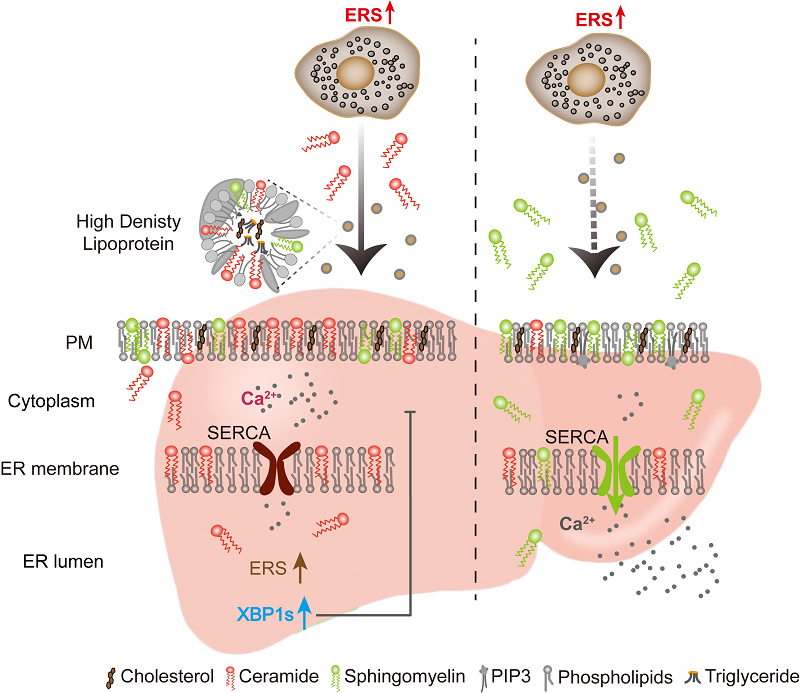
The endoplasmic reticulum (ER) is the portion of the cell responsible for manufacturing and folding proteins. Proteins are essential for a wide range of cellular functions—as enzymes, transporters, hormones, antibodies, receptors, and more. They must be folded into the correct three-dimensional shape to function properly. If the ER is unable to manufacture or fold proteins correctly, the cell develops ER stress, which activates the unfolded protein response (UPR)—a protective mechanism aimed at restoring cellular function.
While UPR begins as an adaptive response, it can become maladaptive—ultimately causing cell death—if ER stress persists for too long.
Recently, a team of Chinese researchers led by Prof. WANG Likun from the Institute of Biophysics of the Chinese Academy of Sciences has provided new insights into metabolic disease mechanisms and potential therapeutic strategies by identifying a novel intercellular signaling mechanism between adipocytes (fat cells) and hepatocytes (liver cells). The study reveals how ER-stressed adipocytes remotely regulate UPR activation in hepatocytes through the secretion of ceramide (Cer), a fat molecule that plays a major role in cell structure, signaling, and stress response.
These findings were published in the Journal of Cell Biology on March 26.
In the study, the researchers first confirmed that ER-stressed adipocytes secrete bioactive signaling molecules capable of activating the UPR pathway in hepatocytes across tissues. Using lipidomics analysis and functional validation, they identified Cer as the key effector molecule responsible for this process.
Further investigation revealed that the UPR pathway in adipocytes does not directly regulate Cer secretion. Instead, ER stress promotes the extracellular hydrolysis of sphingomyelin (SM)—a type of lipid—into Cer through the secretion of acid sphingomyelinase (ASM), highlighting an indirect regulatory pathway.
By investigating how lipid-soluble Cer is transported between cells, the researchers demonstrated that high-density lipoprotein (HDL) serves as the primary carrier for Cer transport. Upon reaching hepatocytes, Cer alters membrane fluidity, influencing membrane protein function, and contributing to UPR activation.
Notably, the researchers also found that exogenous supplementation of SM effectively reversed the Cer-induced changes in membrane fluidity and UPR activation—underscoring the critical role of lipid metabolic balance in cellular homeostasis. The ability to suppress UPR activation suggests that maladaptive responses to ER stress may be reversible.
Expanding on these findings, the researchers discovered that this Cer-based intercellular UPR signaling mechanism has broader applicability, offering a new theoretical framework for understanding multi-tissue coordinated stress responses.
By systematically mapping the molecular pathway of UPR signal transmission between adipose and liver tissues, this study reveals a previously unrecognized form of organ crosstalk in metabolic diseases. These discoveries pave the way for lipid metabolism-targeted therapeutic strategies aimed at restoring cellular balance and mitigating metabolic disorders.

Proposed model showing adipocytes underling ERS secrete ASM to generate ceramide which is transported via HDL. This process reduces membrane fluidity, impairs SERCA activity, disrupts calcium homeostasis, and thereby activates the UPR. (Image by HUO Yazhen)

86-10-68597521 (day)
86-10-68597289 (night)

52 Sanlihe Rd., Xicheng District,
Beijing, China (100864)

